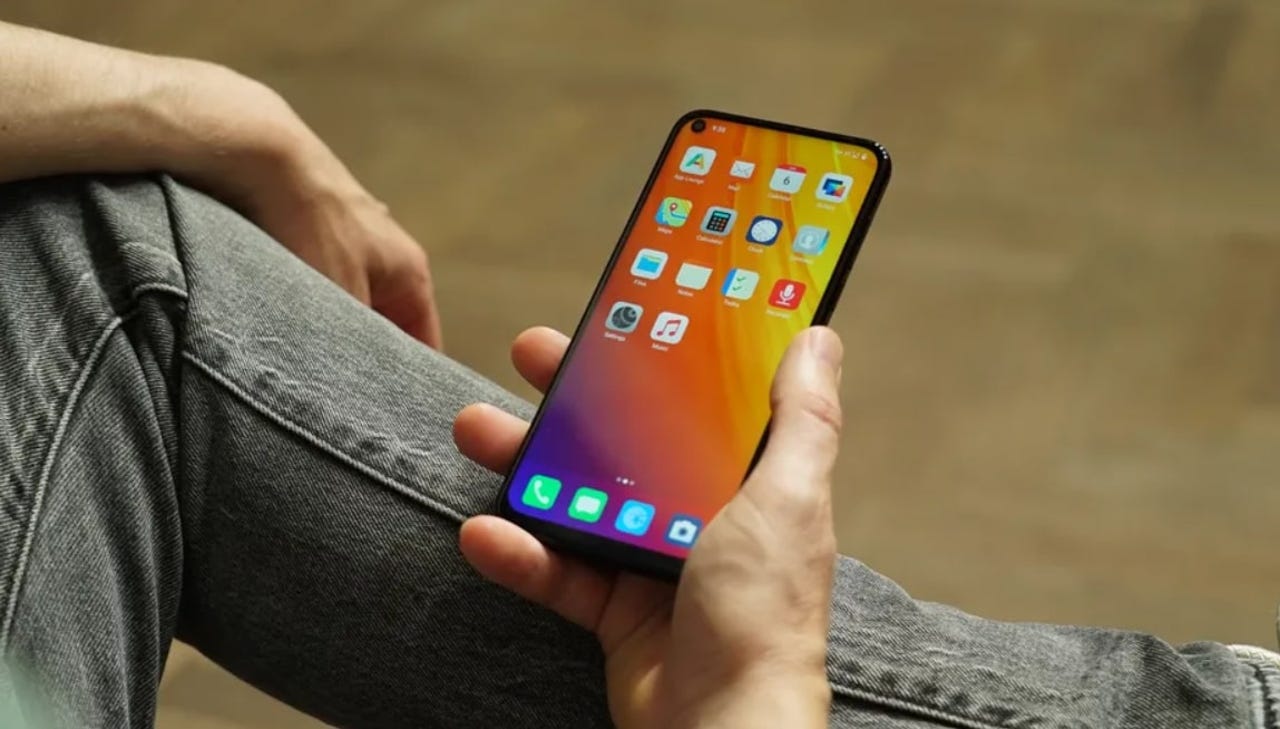Murena, the privacy-first Android smartphone, arrives


If you value privacy and you use a smartphone, you've got a problem. Both Apple and Google constantly collect data on you. A Vanderbilt University study found, for example, that Android sends data to Google even if your phone is sitting idle with Chrome running in the background at a rate of 340 times a day.
Murena and Mandrake Linux founder Gael Duval was sick of it by 2017. He wanted his data to be his data, and he wanted open-source software. Almost five years later, Duval and his co-developers launched the Murena One X2. It's the first high-end Android phone using the open-source /e/OS Android fork to arrive on the market.
ZDNET Recommends
The privacy heart of the Murena One is /e/OS V1. There have been many attempts to create an alternative to Google-based Android and Apple's iOS -- Ubuntu One, FirefoxOS, and Windows Mobile -- but all failed. Duval's approach isn't to reinvent the mobile operating system wheel, but to clean up Android of its squeaky Google privacy-invading features and replace them with privacy-respecting ones.
To make this happen, Duval started with LineageOS -- an Android-based operating system, which is descended from the failed CyanogenMod Android fork.
It also blends in features from the Android Open Source Project (AOSP) source-code trees.
In the /e/OS, most (but not all) Google services have been removed and replaced with MicroG services. MicroG replaces Google's libraries with purely open-source implementations without hooks to Google's services. This includes libraries and apps which provide Google Play, Maps, Geolocation, and Messaging services for Android applications.
In addition, /e/OS does its best to free you from higher-level Google services. For instance, Google's default search engine has been replaced with Murena's own meta-search engine. Other internet-based services, such as Domain Name Server (DNS) and Network Time Protocol (NTP), use non-Google servers.
Above the operating system, you'll find Google-free applications. This includes a web browser; an e-mail client; a messaging app; a calendar; a contact manager; and a maps app that relies on Mozilla Location Service and OpenStreetMap. While it's not here yet, Murena is also working on its own take on Google Assistant, Elivia-AI.
You can also run many, but not all Android apps. You'll find these apps on the operating system's App Lounge. For most commercial apps, App Lounge now connects directly to Google Play Store. Of course, to buy such applications, it's easiest ti use a regular Google account, or in fully anonymized mode. For open-source apps coming from F-Droid, and Progressive Web Apps (PWAs), it connects to the CleanAPK API. Duval added, that "We're going to remove this dependency to CleanAPK and host our own proxy-cache for open-source apps."
With its privacy-first emphasis, the app store also gives apps a Privacy rating. It tells you about the program's privacy settings and what information the app is sharing. It's up to you to decide if an app's utility is worth its privacy compromises. But with this information, Duval told me, "You can make an informed decision."
There's still one big problem: the App Lounge still relies on you logging in with your Google account. In short, the App Lounge is mainly a gateway to Google Store apps. Murena assures me that the Lounge anonymizes your data -- except if you use apps that require payment. Still, this is annoying for people who want to cut all their ties with Google.
ZDNET Recommends
The fundamental problem is this: Murena does all it can to separate its operating system and applications from Google, but it can't -- yet -- replace Google's e-commerce and software store system.
You can, however, download only programs with no Google connection, but there aren't many of them. If you take this path, you likely won't be able to use many apps you're currently using every day.
As for itself, /e/OS doesn't capture any user logs, app usage, or track user location. And, /e/OS does its best to shield your accounts from Google's snoopy ways.
For example, most apps rely on cloud backends for their services. So Murena replaced Google Cloud's services with its Murena Cloud instead. There, you'll find storage, e-mail, and even an online office suite, powered by the open-source OnlyOffice. And, unlike its corporate rivals, Murena promises that its cloud services (just like its phone and operating system) puts privacy first.
Murena Cloud comes with 1 GB of free storage; it also offers inexpensive storage plans starting at 20 Euros per year for 20 GBs of storage.
If all you do is look at the hardware features, the Murena One is a good, but not exceptional, 4G LTE smartphone. It's powered by an eight-core MediaTek processor backed with 4GBs of RAM and 128 GBs of storage. If you need more storage, you can always add an SD card. It comes with a 6.5 inches display.
The cameras are nice. On the display side, you get a 25-megapixel camera for selfies. On the back are three cameras with 5, 8, and 48-megapixel resolutions.
The phone also includes a dual SIM slot so you can enjoy two phone lines with a single phone. As someone who's going back to doing a lot of international business travel, this is a very handy feature. The Murena One is compatible with European carriers and most US and Canadian carriers.
The Murena One will launch in June in the US, Canada, Europe, UK, and Switzerland at a cost of $369.
If you'd like an alternative phone, Murena works with Fairphone, the social enterprise that designs sustainable phones. Gigaset, Teracube, and other phone refurbishers also offer a range of Murena smartphones with /e/ OS, with middle to high-end specs, for all budgets.
You can also possibly download and install /e/ if you have one of these 240 different smartphone models. This includes phones from Google, HTC, Motorola, OnePlus, Samsung, and Xiaomi. It is not available from any phone OEM or carrier at this time. The operating system is free.